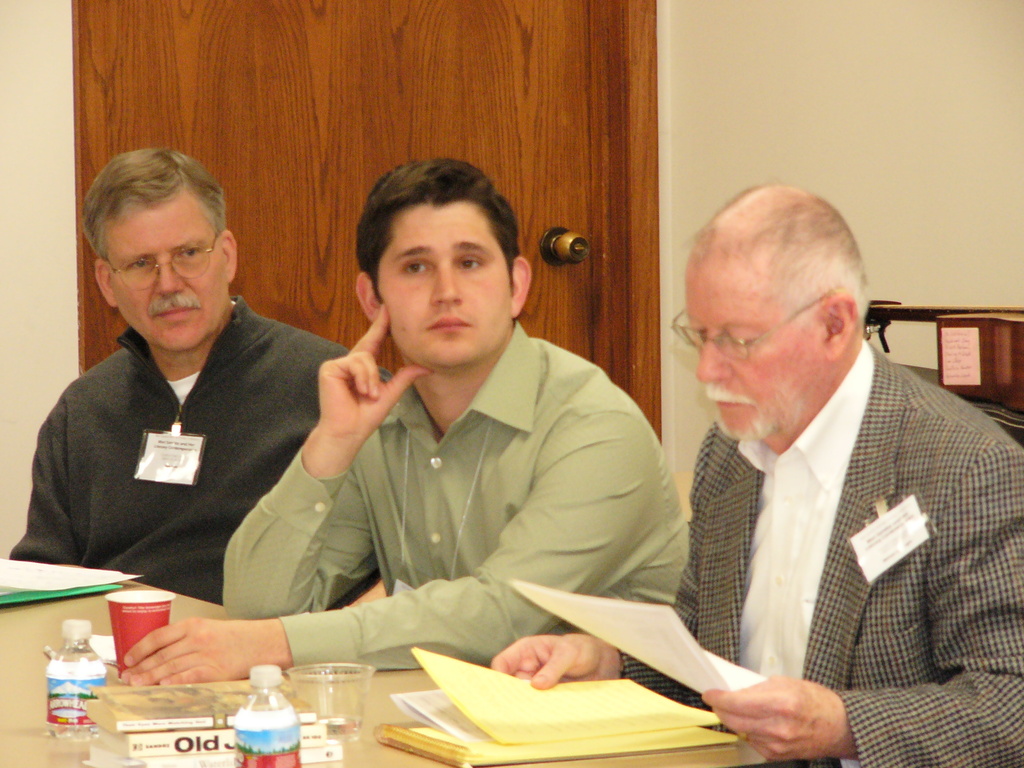Nebraska's top authors wrote about pioneers, were pioneers

Three of Nebraska’s most famous authors, Bess Streeter Aldrich, Willa Cather and Mari Sandoz, not only wrote about pioneers, they were pioneers.
That was the supposition of Dr. Dan Holst, who was among the presenters at last week’s Mari Sandoz Heritage Society conference at Chadron State College during a session on literary influences.
Holtz, a professor of language and literature at Peru State College who earned his master’s degree at CSC, pointed out that each of the three authors wrote about pioneers, an era with which they were familiar. And, like the pioneers who settled on the plains of Nebraska, each experienced untold hardship before finally achieving success.
“They weren’t just writing about pioneers, they were committing acts of pioneering,” Holtz said. “Each of them experienced the physical and emotional struggles and poverty that was common to pioneering.”
For instance, Aldrich’s husband died suddenly when she was 44, leaving her with four children to raise. Cather was working as a magazine editor and didn’t have time to write, even though that was her passion. Also, her employer told her she didn’t have the talent to be a writer, but she definitely proved him wrong.
Holtz said Sandoz may have experieced even more hardship than the others. She spent from 1923 to 1933 in Lincoln, trying to make a living as a writer, but received an endless stream of rejection slips from publishers and during that time earned just $325 from her writing. She finally, burned most of her manuscripts and returned to Sheridan County to help her mother following the death of Old Jules.
Each of the three authors was middle-aged before she finally had a breakthrough that resulted in her becoming successful. For Sandoz, the book that propelled her career was “Old Jules.” Cather’s was “O Pioneers.” Aldrich finally began enjoying financial success and reader approval after “A Lantern in Her Hand” was published.
Another of the speakers, Dr. Michael Cartwright, a language and literature professor at Chadron State College for 26 years and now a resident of Lincoln and Whitney. He passed out a list of the nation’s most successful authors in the 1920s and ’30, and noted the competition in that in that era was stiff. Among them were notables such as F. Scott Fitzgerald, Ernest Hemingway, Sinclair Lewis and John Steinbeck.
Cartwright also pointed out that because of the Great Depression money was not readily available to award prize money for literature or to publish books.
“These were hard times and there was lots of competition,” Cartwright said.
During his presentation, Cartwright compared Sandoz to two other female authors of that era. They are Zora Neal Hurston, a black who lived in Florida, and Ella Deloria, an Indian from near Yankton, S.D.
He said each was a member of a specific subgroup with Sandoz’s being the settlers in the Sandhills. He also said each grew up listening and eventually used that oral tradition as a foundation for their careers. After being away for a time, each also returned to her home community to collect more stories from their friends, neighbors and families.
Cartwright said all three “wrote about what they knew.” He added they were a combination of historians, novelists, folklorists and ethnologists.
During the question and answer period following the presentations, Cartwright agreed that because of Sandoz’s familiarity with Indians, the close relationships she developed with them and the research she conducted while gathering material for her books, she became as close to being an insider to the Native American way of life and culture as is possible for a white person.
The third speaker during the session was Dan Schweitzer, a December graduate of Chadron State with majors in history and English. Schweitzer’s presentation was titled “The Indebtedness of Mari Sandoz to Amos Bad Heart Bull.”
Schweitzer told how Sandoz had used Bad Heart Bull’s life and artwork to build the main character for her book, “The Story Catcher.” He said Sandoz and Helen Blish became friends while both were at the University of Nebraska-Lincoln in the late 1920s and early ‘30s.
Blish had spent many years on the reservation and often rented a book containing Bad Heart Bull’s pictographic history of the Oglala Sioux from his sister, Dollie Pretty Cloud. The book was buried with Pretty Cloud after she died in 1947, but the contents were copied by Blish’s mentor, Harley Burr Alexander, and made into a book, “A Pictographic History of the Oglala Sioux.”
Schweitzer said the strongest corroborative evidence that Bad Heart Bull’s work influenced “The Story Catcher” is in the book’s introduction. He said Sandoz dedicated it to the Bad Heart Bull family, whom she called “a long line of story catchers,” and singled out Amos as “an artist and great historian of the Oglala Sioux.”
Category: Campus News, Sandoz Society
